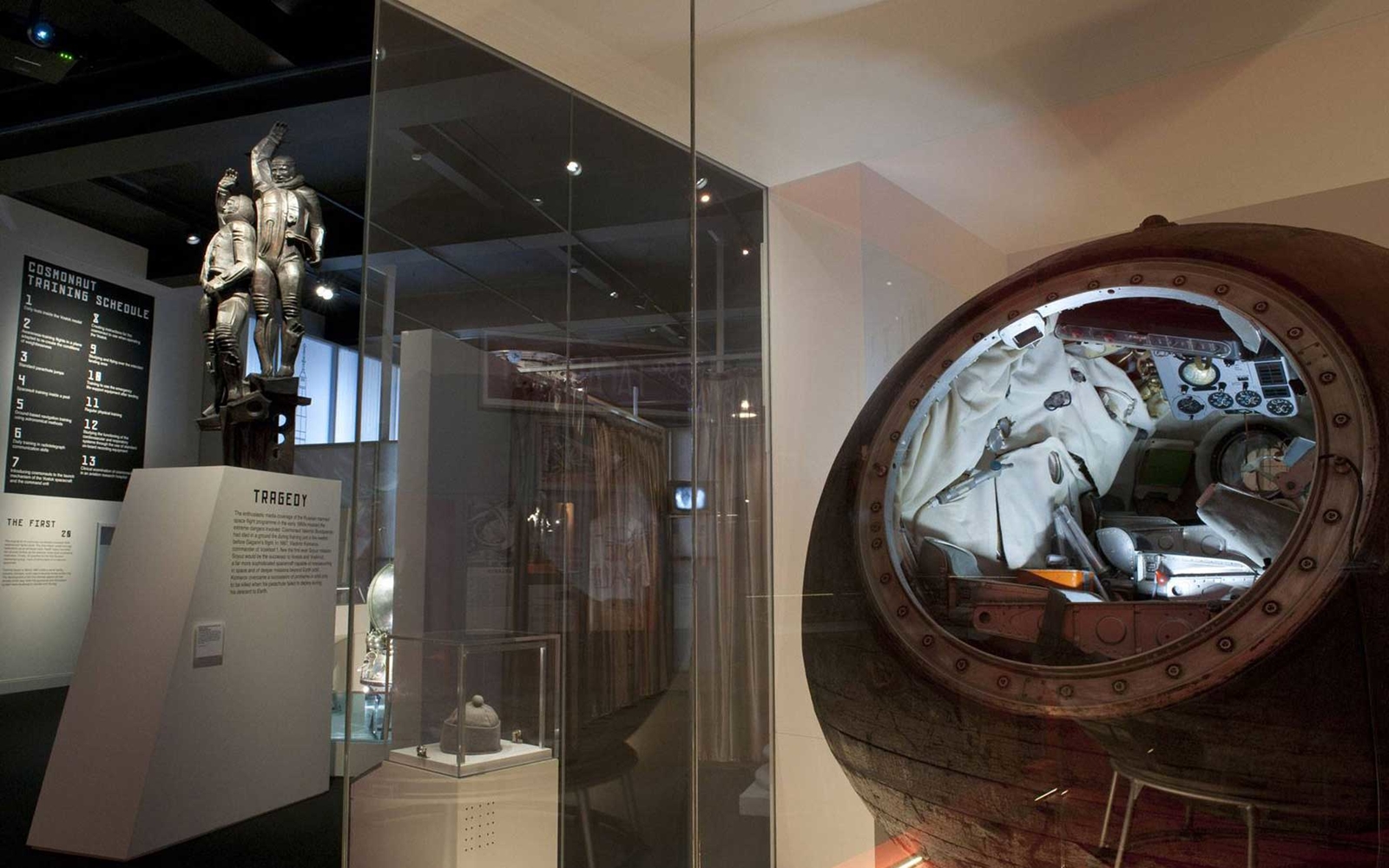
London's Museum of Science exhibits 150 super cool artifacts from the former Soviet Union's ground-breaking space program, examining its theoretical origins, its major milestones, and its current work.
Almost none of the 150 items on display in "Cosmonauts: Birth of the Space Age" have ever left Russia, and many had to be declassified before they could be lent to London's Science Museum, where this new exhibition recently debuted. Open until March 16 of next year, it's the largest collection of Russian space program objects and ephemera ever gathered.
"Cosmonauts" boasts objects large and small: Vostok 6, the capsule flown by first-woman-in-space Valentina Tereshkova; a version of the original 1957 Sputnik satellite; the first artwork ever made in space (Alexei Leonov's colored pencil drawing of the sun peaking up over the curve of the Earth); a lunar roving vehicle; a 1932 drawing for the film Cosmic Voyage by Konstantin Tsiolkovsky, the godfather of Soviet space travel, showing a cosmonaut entering and exiting a spacecraft via airlock—a prescient prediction; an ejector seat designed for dogs, the first living creatures Russians sent beyond Earth's atmosphere.
Visitors can also find a 1959 bottle of champagne from French winemaker Henri Maire, who publically wagered that no spacecraft could see the dark side of the moon. When the 1959 Luna 3 mission sent back photos, Maire shipped 1,000 bottles to the Russian Academy of Sciences.
The exhibition follows the Russian space program's failed efforts at a moon landing (and includes the LK-3 Lunar Lander, a single-occupant craft meant to compete with the Apollo mission) as well as its successes in building Mir, the first modular space station, and the International Space Station, built in partnership with the United States. For a Cold War comparison, the Apollo 10 command module—all three tons of it—can be found in the museum's permanent collection.
Leonov, who became the first person to walk in space in 1965, is also one of the few remaining members of that era's space program still alive. The exhibition shows off the tools with which he made that first work of art in space: a box of colored pencils attached to a rubber wristband, a string attached to each pencil. He made the sketch on the Voskhod 2, during the same mission on which he took his historic spacewalk.
"When I was getting ready for the space walk, nobody knew anything. There was no history," Leonov said in London while on a visit to the Science Museum last May. "These are the objects, with the help of which we conquered space, step by step."
Looking for more on things to do in London? Read T+L’s Guide to London.